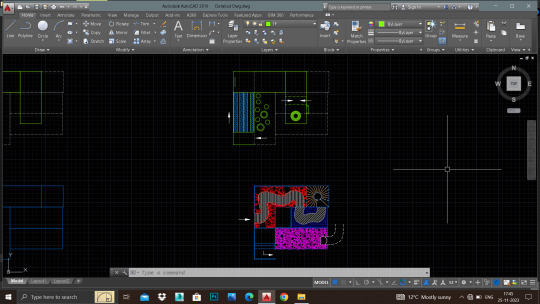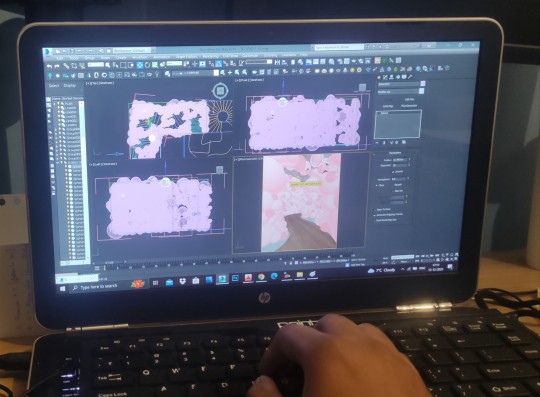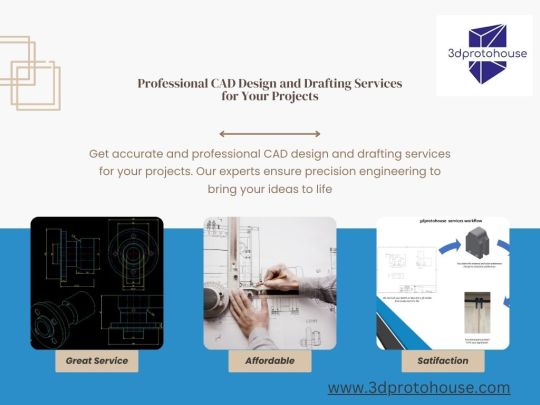#3D CAD Design Service
Explore tagged Tumblr posts
Text
Avail The Best 3d Product Design Services
Your responsibility is to create reliable numerical control programs that run smoothly and produce accurate and reliable tools for 3d Product Design Services. Management expects you to complete these programs with the least amount of time and energy. Of course, they need you for several to schedule overlapping projects to run simultaneously, CNC machines are continuously fed and downtime is minimized.
0 notes
Text
MCR Interior Design (Solo Project Task) - 2010

#MCR#mcr tour#empower#promote#service#marketing#branding#presentation#3d cad modeling#3d render#design#digital art#portfolio#artist#automotive design#concept#umarali#khokhar#bristol#umi3-nous design#technology#futuristic#ideas#innovation#artwork#UK#tech skills#self taught designer
3 notes
·
View notes
Text



Sharing out some of my design process..... Work in Progress!
After the physical model-making part, it is time to complete the other process of design. I have used softwares like:-
AutoCAD - 2D drawing and drafting 3Dsmax with Vray- 3D Visualisation Photoshop- To give life to the design 🥰 Editing
Moving forward with the final stage of designing!
#work in progress#work#design#interior design#visualisation#drawing#architectural drafting services#cad design#cad drawing#autocad#3dsmax#3d modeling#photoshop#edit#editing#architecture#blog post#go with the flow#trust the process
5 notes
·
View notes
Text
Cad Design and Drafting Services
Get accurate and detailed CAD design drafting services from 3DProtoHouse. Our skilled drafters use advanced software to create high-quality 2D and 3D designs for engineering, architecture, and manufacturing industries. Contact us today for timely and budget-friendly project completion.

7 notes
·
View notes
Text
Embark on a Journey of Design Excellence with Premier 3D CAD Modeling Services. From the UK to the USA, India to Germany, our Expertise in 2D/3D Design and Drawing Delivers Unmatched Precision and Innovation.
#designs#3d cad modeling#3d furniture design software#3d furniture design#cad conversion services#hvac cad design#product design#furniture#cad#shalin designs
2 notes
·
View notes
Text
How to Choose the Best CAD Jewelry Service for You?
Discover how to choose the best CAD jewelry service for your custom designs. Learn about key factors like designer experience, 3D CAD jewelry design, and more to create your perfect piece.
Read More: https://www.jewelryrenderingservices.com/blog/how-to-choose-the-best-cad-jewelry-service-for-you
#Cad Jewelry Service#3d cad jewelry design#3d cad jewelry designer#cad jewelry design#cad jewelry designs
0 notes
Text
Innovative 3D CAD Modeling by Shalin Designs
Innovative 3D CAD Modeling by Shalin Designs
Every great idea deserves the perfect design. At Shalin Designs, we specialize in delivering high-precision 3D CAD modeling services that bridge the gap between concept and reality. Our team of experienced designers combines technical expertise with creativity to provide solutions tailored to your industry.

Our Expertise
Custom 3D Designs: From product prototypes to architectural blueprints, we create detailed, accurate models.
Cutting-Edge Tools: Proficient in industry-leading software like SolidWorks, AutoCAD, and Creo.
Seamless Collaboration: We work as an extension of your team, ensuring every project meets your specifications.
Applications We Support
Mechanical Design: Optimize components and assemblies for functionality and manufacturability.
Product Development: Create 3D models for testing, presentations, or production.
Construction & Architecture: Bring your building designs to life with realistic 3D representations.
Whether you’re an innovator or a business looking to enhance your designs, Shalin Designs is your go-to partner for 3D CAD modeling.
Why Choose Us?
Expertise in CAD tools like AutoCAD, SolidWorks, and CATIA.
Affordable pricing with no compromise on quality.
Quick turnaround times to meet your deadlines.
Boost your projects with our reliable 3D CAD services today. Learn more here!
Email: [email protected]
Phone: +44 7540215955
0 notes
Text

CAD Design for Successful Development
Unlock precision and innovation with our expert CAD design services. Our team specializes in creating detailed 3D and 2D models tailored to your project needs. Whether for engineering, product development, or architecture, we deliver accurate, cost-effective designs. Contact us today to bring your ideas to life with advanced CAD solutions! Read More:- https://joripress.com/CAD-Design-for-Successful-Development
0 notes
Text
Discover the transformative role of 3D modeling services in the patent industry. This episode explores how detailed 3D digital representations enhance patent applications, prototyping, litigation, and licensing. Learn the differences between 3D models and traditional 2D drawings, the process of creating these models, and their impact on visualizing and protecting innovations. Whether you're an inventor, attorney, or business leader, gain valuable insights into how 3D modeling can elevate your intellectual property strategy.
Ready to elevate your innovation with expertly crafted 3D models and patent drawings? Visit The Patent Experts to explore our services and request a free consultation today!
#professional 3d modeling#3d design services#custom 3d modeling#3d product design#prototype modeling#cad design solutions#3d rendering services#patent#design patent#utility patent#patent application#patent drafting#uspto#patent drawings services#illustrations#technology#services#business#startups
0 notes
Text
What Are The Practices Behind 3d Model Design?
To make a shape utilizing 3D printing, a 3d Model Design of the part is to begin with made. This show is at that point changed over to G-code, which may be a 3D record organize discernable by a 3D printer. The G-code record is at that point sent to the printer for printing. After the shape is 3D printed, it is tried and utilized in generation by filling it with plastic and metal. As the fabric cools and solidifies, it takes the shape of the shape.
0 notes
Text
BMW Supersonic Business Jet Concept (Presentation Board Promo) - 2011

#BMW#aircraft#aviation#business jet#concept design#empower#promote#service#marketing#branding#presentation board#3d cad modeling#3d render#design#digital art#portfolio#artist#automotive design#umarali#khokhar#bristol#wales#UK#umi3-nous design#technology#futuristic#ideas#innovation#artwork#tech skills
0 notes
Text
How Drafting Services Cater to Budget and Space Constraints
Drafting services are an invaluable resource for homeowners navigating budget and space constraints. By combining creativity, technical expertise, and a client-focused approach, they ensure that your project is both cost-effective and functional.
#drafting services#professional drafting solutions#architectural drafting#residential drafting plans#commercial drafting services#autocad drafting#revit drafting experts#structural drafting plans#custom home drafting#floor plan drafting#cad drafting services#3d modeling and drafting#detailed construction drawings#remodeling drafting plans#drafting and design services
0 notes
Text
HVAC Duct Layout Drawing | CAD 2D Construction Blueprint
Professional HVAC duct layout drawings and CAD 2D construction blueprints by DSR Designs. Ensure precision and reliability in your projects.
#3D Modeling#cad drafting services#bim modeling services#2d mechanical drawing#hvac duct layout drawing#mechanical engineering services#cad design services#mep bim services#mechanical design services#mep engineering services#engineering consulting services#clash detection services#bim service providers#shop drawings services
0 notes
Text

Cad cam jewelry de
sign
0 notes
Text
Expert CAD Services of Shalin Designs with CAD design & Drafting Solution.
Are you overwhelmed by intricate design projects? Do you find yourself spending countless hours on manual drafting and modeling? Shalin Designs offers CAD design solutions. With our expert team and advanced CAD software, we can streamline your design process, saving you time and effort.
What is CAD Design and Drafting?
Computer-aided design (CAD) refers to the use of software to create digital models of physical objects. CAD drafting, on the other hand, is the process of creating 2D technical drawings from 3D CAD models or vice versa. These drawings are essential for manufacturing, construction, and other engineering applications.
Why Choose Shalin Designs for Your CAD Needs?
There are several reasons why Shalin Designs should be your go-to partner for all your CAD design and drafting needs:
Extensive Range of Services: Shalin Designs offers a comprehensive suite of CAD services, including 2D CAD drafting, 3D CAD modeling, CAD conversion, and product design. This ensures that you can get all your CAD requirements met under one roof.
Experienced and Qualified Professionals: The company has a team of highly skilled and experienced engineers and drafters who are proficient in using the latest CAD software and technologies. This guarantees that your projects are completed with precision and accuracy.
Affordable Rates: Shalin Designs offers competitive rates for its CAD services, making them accessible to businesses of all sizes.
High-Quality Results: The company is committed to delivering high-quality CAD designs that meet your exact specifications.
Fast Turnaround Times: Shalin Designs understands the importance of timely project completion. They strive to deliver your projects within the agreed-upon timeframe.
Industries Served by Shalin Designs
Shalin Designs caters to a wide range of industries, including:
Furniture
Engineering
Manufacturing
Architecture
Product Design
In Conclusion
If you are looking for a reliable and experienced CAD design and drafting service provider, then Shalin Designs is the perfect choice for you. With their extensive range of services, experienced professionals, and commitment to quality and efficiency, Shalin Designs can help you bring your design ideas to life.
Don't hesitate to contact Shalin Designs today to discuss your specific CAD requirements and get a free quote!
#cad design services#cad drafting services#3d cad modeling#cad conversion services#millwork drafting services#3d modeling#3d cad modeling services#cad design
0 notes
Text
Driving Innovation with Drafting and Design Engineering, GIS Mapping Services, and Geotechnical Engineering
Infrastructure development, urban planning, and resource management requires high-sophisticated levels of technology along with expertise. This starts from conceptualizing projects with drafting and design engineering to analyzing terrains through GIS mapping services or tackling earth science challenges through geotechnical engineering services. Businesses now have the capabilities of building smarter, faster, and more efficiently.
Accuracy in Planning: Drafting and Design Engineering
At the heart of every successful project lies meticulous planning and a clear envisioning of the work, which falls directly into line with drafting and design engineering. These services enable engineers, architects, and developers to literally draw up an exact representation of structures and systems.
Whatever the mechanical systems might be, whatever the structure or arrangement might be and however large their electrical layout, designing, and drafting become the possible keys toward efficient project execution, saving both time and resources.
Mapping the Future: GIS Mapping Services
GIS mapping services change how we perceive and manage geospatial data. Combining spatial data with detailed analytical perspectives, GIS mapping expands knowledge to better inform decisions in entities such as urban planning, environmental management, and transportation.
Benefits of GIS mapping services include:
Data Visualization: Convert raw data into intuitive maps for easier understanding.
Real-Time Insights: Carry out timely observations and informed decision-making based on real-time data.
Cost-Efficient Solutions: Optimize resources to analyze spatial patterns and trends.
GIS mapping applications that range from plotting utility networks to planning disaster response, prove to be a powerful solution to contemporary problems.
Stability and Safety: Geotechnical Engineering Services
No construction of a project is complete without proper knowledge of what lies beneath the ground it will stand upon. Geotechnical engineering services focus on analyzing soil, rock, and conditions in the subsurface to ensure the safety and stability of structures.
Key aspects of geotechnical engineering include analyzing the properties of soil and rock to make it suitable for construction and developing appropriate safe and efficient solutions for building stability.
Furthermore, analyzing and taking the right steps to prevent landslides and erosion in complex terrains. From high-rise skyscrapers to tunnels, geotechnical engineering can play a key role in managing risks, ensuring compliance, and delivering durable structures.
The Synergy of Drafting, GIS, and Geotechnical Services
Combining drafting, design engineering, GIS mapping services, and geotechnical engineering services offers a comprehensive approach for project planning and execution. These services coupled together ensure:
Holistic Planning: Detailed designs are matched with spatial analysis and soil assessments in every aspect of the project.
Reduced Risks: Insights into geographical and geotechnical conditions minimize vulnerabilities in the project.
Optimized Resources: Efficient planning saves time, money, and materials.
For instance, a construction project can begin with GIS mapping to identify optimal locations, proceed with drafting and design engineering to create blueprints, and finalize with geotechnical engineering to ensure foundation stability.
When it comes to integrating these services into your projects, working with experienced professionals is key. Experts bring cutting-edge tools and industry insights to deliver tailored solutions that meet your unique needs.
#drafting and design engineering#Geotechnical engineering services#GIS mapping services#3d cad solutions#cad drafting serviceas#millwork shop drawing#Drafting and Design services
0 notes